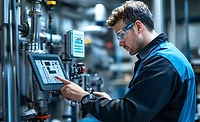FA&M 2021 Conference Highlights
Manufacturing facility planning and ops: The planning is vital
AriZona Beverages took years to plan, design and build a new facility in New Jersey, leaving nothing to chance
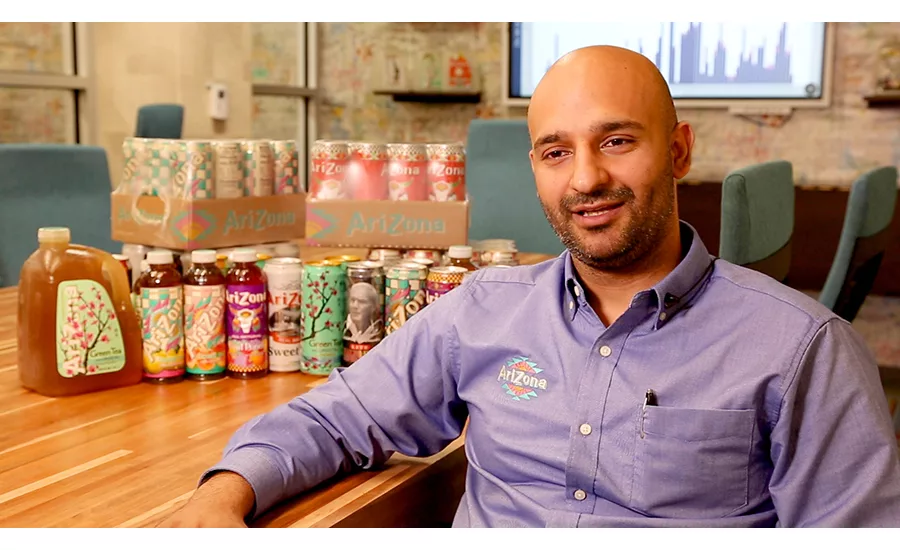
Shami Usmani, VP Engineering & Manufacturing at AriZona Beverages. Photos courtesy of AriZona Beverages
If you visit AriZona Beverages’ website and click on “Who’s Thirsty?” it seems that once you start scrolling through available beverages, you’ll never get to the end. With more than 300 products sold around the country, it takes some modern equipment and some talented, dedicated people to make all those products.
AriZona Beverages got its start—not in Arizona—in Brooklyn, N.Y. in 1992 and was founded by Don Vultaggio, chairman. The company has been family owned and operated by Don and his two sons, Wesley and Spencer. Its corporate headquarters in Woodbury, N.Y. looked at potential new manufacturing sites with lots of space and idealized transportation routes—and came up with Woodbridge Township, N.J.
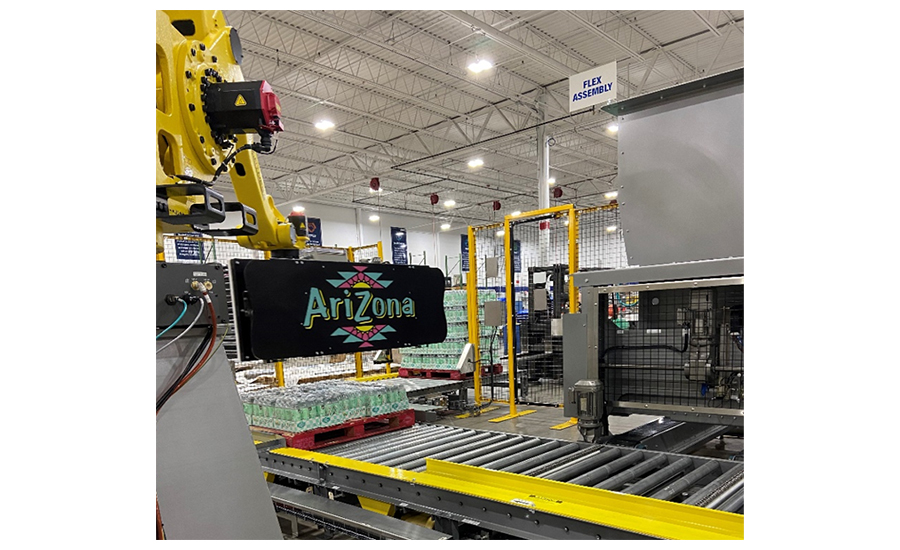
Planning for the New Jersey site
“Why did we choose New Jersey?” said Shami Usmani who spoke in the FA&M presentation describing manufacturing facility planning and operations. Usmani is AriZona’s VP engineering & manufacturing. “Where the facility is located was important. It’s a logistics hub, connected to four major highways, close to two major metro areas—and it’s close to all our major suppliers. In addition to the location, we were fortunate enough to have rail access. We are shipping finished goods by rail and receiving raw materials by rail.”
The new 621,000-sq.-ft. facility was not an overnight project execution in any way. Conceptually, the project started back in 2000, and the land was purchased in 2009. “We actually commenced construction in the summer of 2017. It took us about 4 years to complete the project,” added Usmani.
Completed through the pandemic, all five of the facility’s highly automated production lines were designed to the current industry standard, added Usmani. “We took the best in class equipment out there, married it with other best in class equipment, and put all the manufacturing lines together. Batching and CIP systems are cleanest in the industry. They have proper ventilation and ergonomics and spaces.”
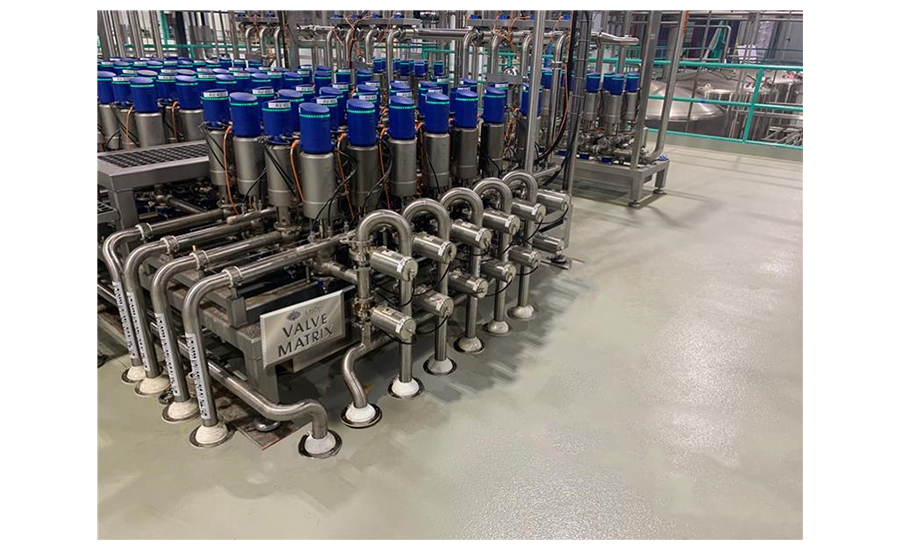
Automation high points
MES, SCADA, maintenance and building management (BMS) systems all report to an SAP ERP system. Usmani noted that the BMS monitors all utilities and controls energy and steam demands as processes and lines require them.
Among several unique process/packaging innovations is a one-of-a-kind blow molding system that extrudes both PET and gallon bottles within the plant, and passes them through the wall to fill the bottles in under three minutes after the bottle is made. The purpose is to increase efficiency and avoid having empty bottles shipped from all over the country, thus reducing carbon footprint.
Since so much time was committed to planning this facility, nothing was left to chance. “We have five production lines, and we strategically designed them in order to optimize not only the space and reduce material costs, but also reduce the amount of labor required by making our lines highly automated,” said Emily Pressman, packaging engineer. Pipe runs are short and most operations were designed to run near the center of the plant. There is one operator for each machine, and distances operators have to travel are kept short. Unique to U.S. plants is an automatic system for loading can lids (common in Europe), so a person is not subjected to the environmental heat around a hot-fill operation.
According to Philip Lelikov, plant engineer, the facility boasts one of the largest batching valve matrix system installations in the industry, consisting of 96 mix-proof valves, which provide full flexibility for making changes in products and recipes. Tanks can be switched to different fillers, and numerous size batch tanks are available to increase efficiency and optimize layout. The plant’s process design includes dedicated line thermal process systems and has CIP integration.
As noted above, the MES provides overall line integration with the SAP ERP system and also provides monitoring performance data and collecting it for continuous improvement (CI) activities, said Pressman. There is also a quality monitoring system within the MES. A SCADA system provides historian data collection, batch management, line control and production planning, and is integrated into the MES and ERP systems. Terminals are available on each line and at every batch station. In addition, authorized people have remote access.
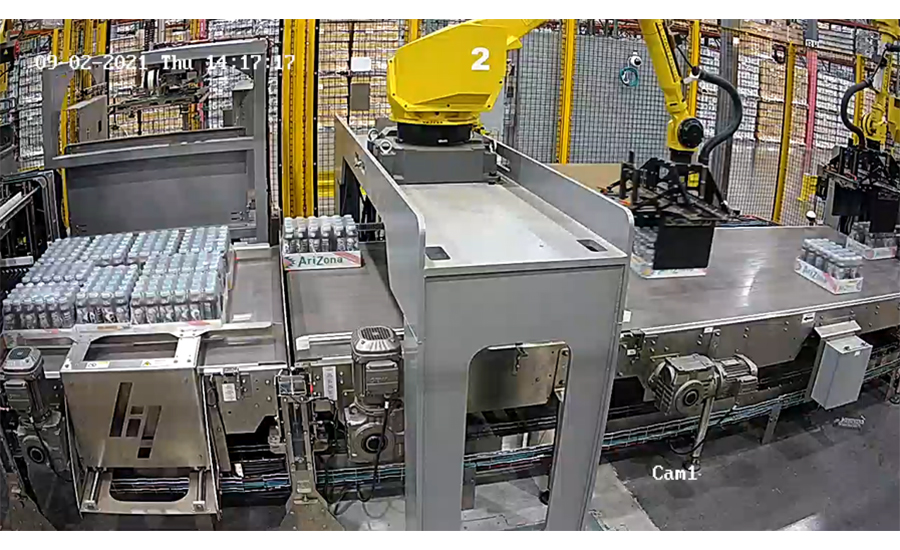
Locating problems and tracking utilities
For plant maintenance and CI, a VPN was set up for each machine center. “This came in handy during the pandemic,” said Pressman. “Vendors across the country and the world could log in remotely via VPN to help us when we were having issues. A lot of people were not able to travel, so this helped us a lot.”
Pressman also described the camera system for capturing video 30 seconds before, during and 30 seconds after a fault condition, which makes it easy to go back and look at what happened for both staff maintenance people on premises and vendor maintenance teams scattered across the globe. A Rockwell Asset Center also makes it easy to compare all program changes on each machine center. The Asset Center provides real-time visibility when someone is connected to a PLC and captures recipe parameters during good production runs, allowing comparison of data for when a production run was out of kilter.
A plant infrastructure management system handles all critical utilities associated with boilers, chillers and cooling towers, said Usmani. It also provides overall visibility of utilities with a mouse click and instant outage reporting. In addition, the system reports on utilities usage.
From construction start in 2017, processing and packaging equipment installation began in June, 2019, and the first saleable bottle was produced in December, 2019. Usmani said that without the talented people they were able to have on staff, this track couldn’t have been accomplished so successfully. The facility was designed to be a “home away from home” with an inviting cafeteria, and a gym for employees to use off hours. Colors were chosen to be cheerful and friendly.
Technology and people working together
Finally, Usmani said that technology has to be used properly—to help improve efficiency and employee skill sets. There is an emphasis to provide the training to give employees a strong career path, plan various events to continue to boost morale and to train and develop other manufacturing partners.
If you asked anyone involved in this project what were the biggest lessons learned, you would hear the words: caring and protecting employees, planning, always growing, continuous learning and improving day by day.
To watch this session
This article is a snapshot of what was said during the manufacturing facility planning and ops presentation. You can watch a recording of it until August 2022 at https://www.foodengineeringmag.com/food-automation-conference/2021/agenda.
Looking for a reprint of this article?
From high-res PDFs to custom plaques, order your copy today!






